Este post também está disponível em:
Português
English
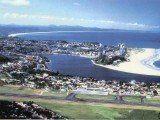
Ilhéus is known worldwide through the works of Jorge Amado, such as Terras do Sem Fim, Cacau, São Jorge de Ilhéus and Gabriela Cravo e Canela and the city receives visitors from all Brazilian regions and abroad.
The municipality also has the longest coastline in Bahia, with 100 kilometers of beach, as well as offering tours of rivers, waterfalls and the countryside, with opportunities for adventure seekers such as abseiling, surfing and sport fishing.
Both because of its 100 kilometres of beaches and because of its cultural importance.
The urban environment of Ilhéus is reminiscent of the texts of Amado’s novels; in the main square is the Vesuvio Bar and, very close by, the Bataclan, a cabaret frequented by the city’s wealthy in the days when cocoa was known as “black gold”.
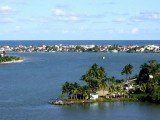
During the day, you can enjoy the beaches and, at night, the buzz in the bars and restaurants with live music.
The main buildings in the city date from the early 20th century, with the exception of the Igreja Matriz de São Jorge dos Ilhéus, built in 1556.
The town starts to get busier in November, when cruise ships arrive and stop in Ilhéus in the summer.
During the year there are fishing tournaments, fashion fairs and sports competitions.
Ilhéus was once the largest exporter of cocoa in the world.
The cacao seedlings planted in Ilhéus were brought from the Amazon around 1890. With the discovery of their commercial value, the plantations multiplied and covered the entire region.
At the beginning of the 20th century, the wealth generated by this monoculture gave rise to an era of splendour and luxury.
The “cocoa colonels” not only built their palaces in the city, but also financed public works that would emphasise their prosperity. This is the case of the Municipal Theatre, the Church of São Sebastião and the port intended to facilitate the flow of cocoa.
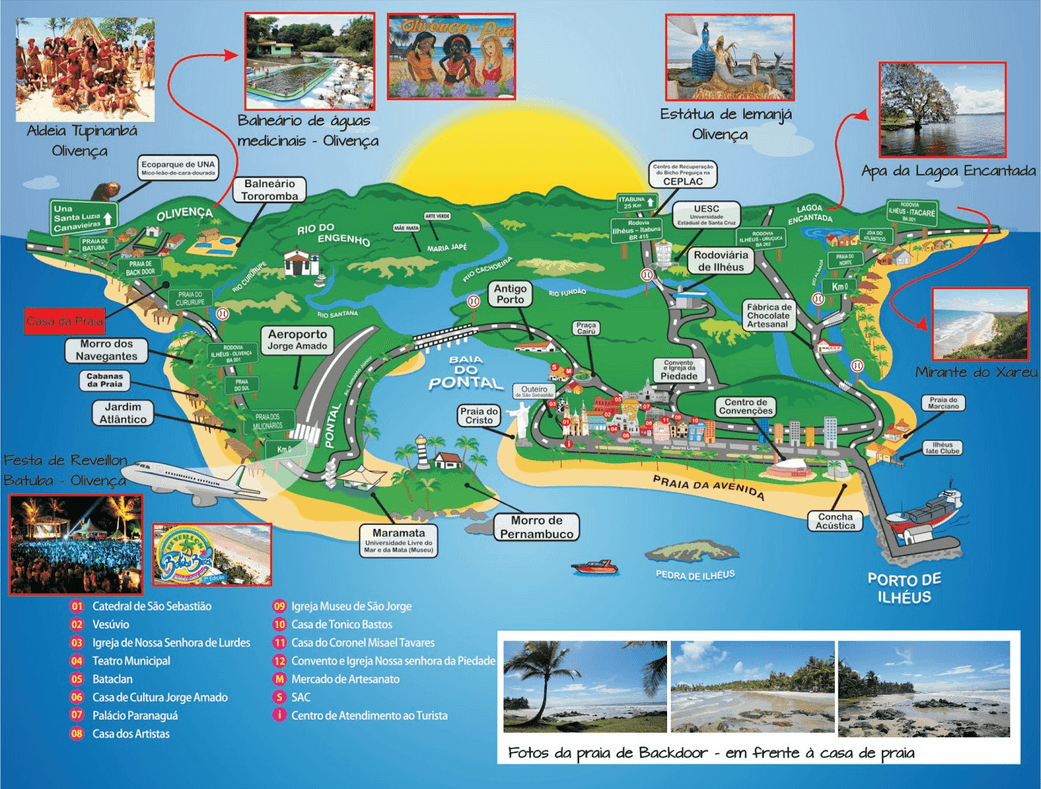
At the end of the 1980s, cocoa production collapsed due to low prices on international markets, droughts and the “witches’ broom” fungus, which spread and destroyed plantations.
The plague, it was speculated, was the result of sabotage by agents from other cocoa-producing countries.
According to a report in Veja magazine on 21 June 2006, the “biological terrorism” was allegedly politically motivated by Brazilians who wanted to reduce the power of the region’s big farmers.
It was an economic disaster for Bahia and Brazil, generating huge losses and unemployment.
Since then, from being exporters, we have become importers of the product.
Today. Ilhéus’ economy is based on tourism, industry and agriculture, which are using technology to recover the cacao trees by cloning plants resistant to the “witches’ broom”.
Believe it or not, Ilhéus is responsible for 20% of the country’s production of computer components. Among its districts, Olivença offers the best tourist infrastructure.
View the Costa do Cacau map and the Imap of Ilhéus.
Video about Ilhéus Tourist Attractions


Ilhéus Vista de Cima14:14
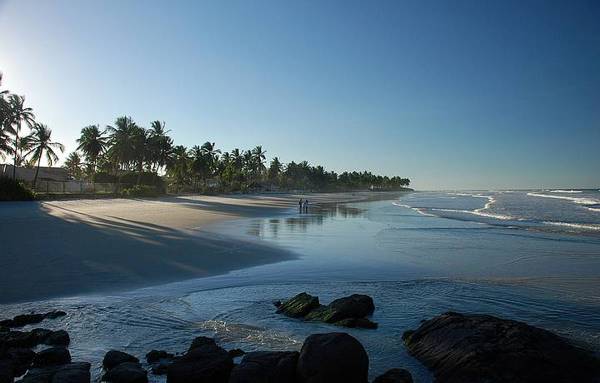
Ilhéus - Reportagem
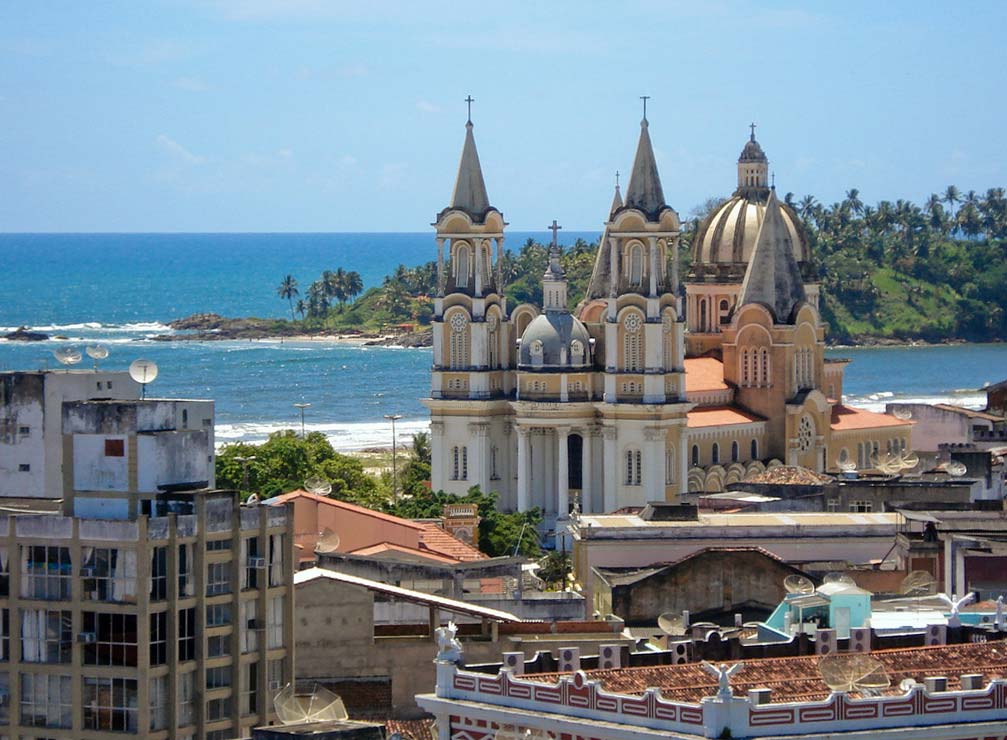
O que fazer em Ilhéus10:22
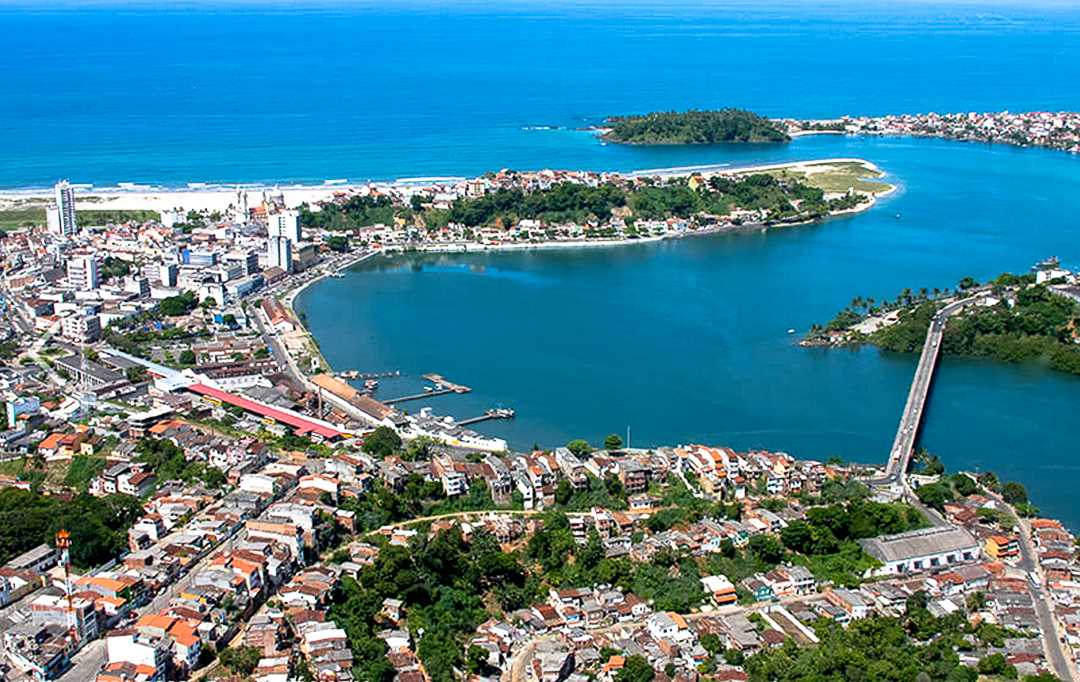
Pontos Turísticos de Ilhéus
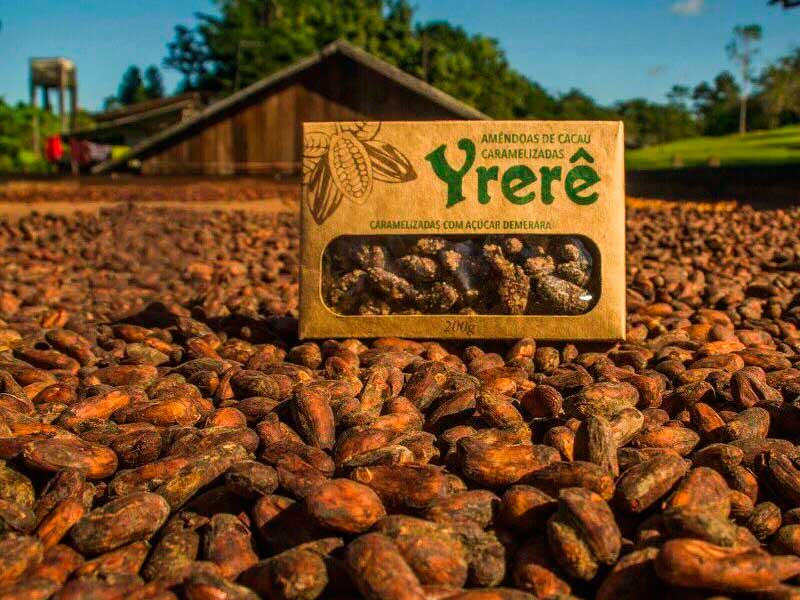
Fazenda Yrere em Ilhéus04:51
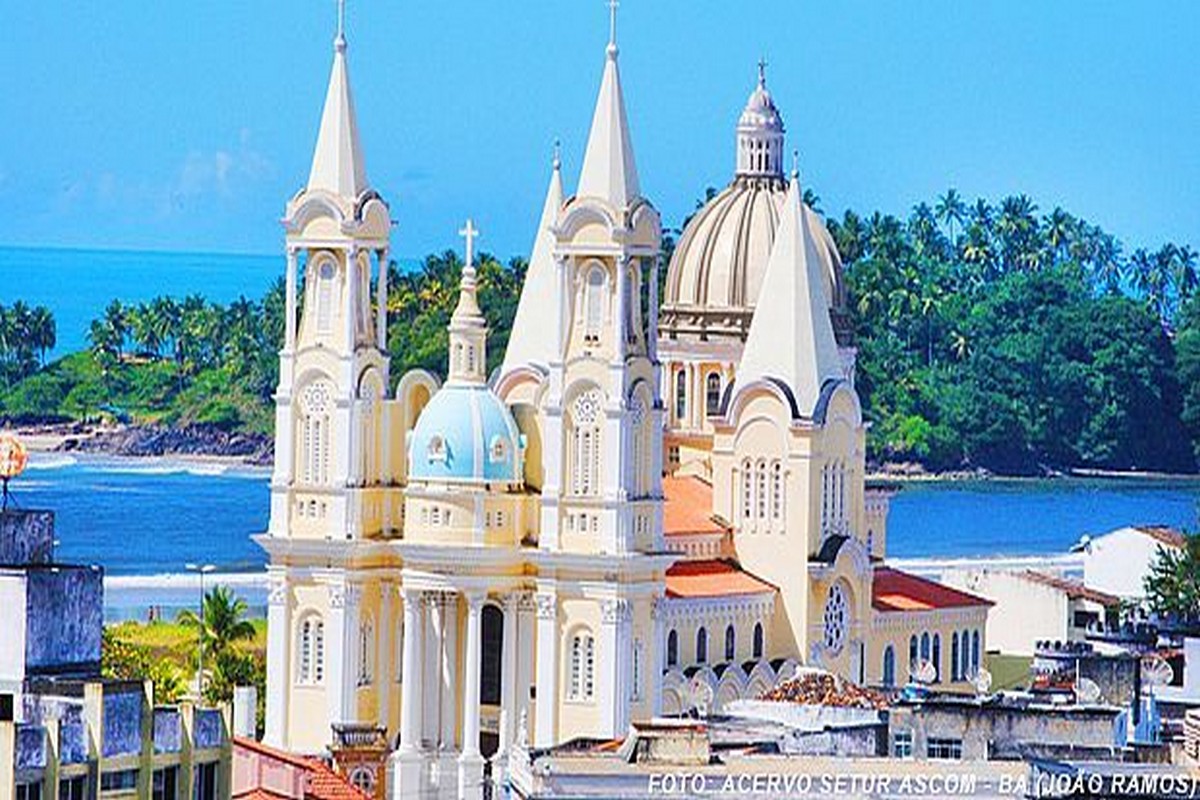
Pontos Turísticos de Ilhéus BA25:49
Tourist Spots of Ilhéus
- Saint Sebastian Cathedral
- Bar Vesuvio
- Cacao Square
- Regional Cocoa Museum
- Chapel of Our Lady of Piety
- Matrix Church
- Outeiro de São Sebastião
- Bataclan
- Municipal Theater
- The Jorge Amado House of Culture
- Palácio do Paranaguá
- Chocolate Factory
1. Cathedral of São Sebastião
The design of the cathedral is by the architect Salomão da Silveira, in a style considered eclectic.
Dom Frei Eduardo José Herberold, a newly arrived bishop, blessed the land in 1931 where the cathedral was to be built and work began, only to be paralysed soon afterwards.
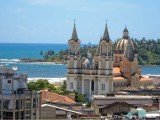
There was much discussion about its style and location. In order to find a solution, Mayor Eusínio Lavigne decided to consult the director of the School of Fine Arts in Rio de Janeiro, Professor Arquimedes Memória.
This imposing temple of the Catholic Church has represented the dream of the Ilheense community for more than thirty years.
It represents the dream of the bishop who started the work, Dom Eduardo, who was buried in the church itself and is still idolised today, being considered a saint by many of the faithful.
The cathedral was inaugurated in 1967 and took more than thirty years to build.
The size of the church is impressive. Its main vault is 48 metres high.
Although it cannot be considered an architectural masterpiece, it has enormous cultural value, given what it represents for local society and for the municipality’s tourist activity.
According to testimonies, the “wonder of wonders was its inauguration”. That day the city was invaded by bishops and cardinals. Even the Pope’s representative, the Apostolic Nuncio, Mgr Sebastião Baggio, came for the inauguration.
And the choir of the teacher Maria de Lurdes Abreu sang Haendel’s Messiah. On the day of the inauguration, the Cathedral looked like a miniature Vatican, such was the beauty, pomp and circumstance of that celebration.
The Cathedral of St Sebastian is undoubtedly the symbol of the city of São Jorge dos Ilhéus and a major tourist attraction.
Tourists do not fail to visit it, they complain during the periods when it is closed and take away from the city a beautiful memory of the grandeur of the church.

2. Bar Vesuvio
With a name associated with the novel Gabriela Cravo e Canela, it has become a tourist attraction.
Opened in 1919 by two Italians, it retains its original structure. Live music from 6pm.
3. Cocoa Square
Located right in the city centre, it has landscaping that imitates a miniature cocoa farm. In the square are 100 types of cocoa trees.
4. Regional Cocoa Museum
It focuses on the cocoa cycle and the history of the region since the time of colonisation.
The collection consists of photographs, documents, objects and works of art.
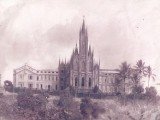
5. Capela de Nossa Senhora da Piedade
In 1927, at the end of the first government of Mário Pessoa, the chapel of São Sebastião was demolished so that a cathedral could be built in its place.
The construction of the majestic new cathedral gave rise to much discussion about the project and the location.
The Nossa Senhora da Piedade Institute contributes to the development of Ilhéus and the region, educating young people for social life.
It all began with the invitation made in 1916 by the 1st Bishop of Ilhéus, D. Manuel de Paiva, to Mother Maria Thaís Paillart to found a school for girls here, since the region at the time lacked formal education.
Already installed in the building that housed the convent and boarding school, work began on the construction of the Chapel of Our Lady of Piety. In 1927, construction began on the chapel, a beautiful example of neo-Gothic architecture.

The builder Salomão da Silveira adapted the plan commissioned in France by Mother Thaís, and the work was completed in 1929.
From campaigns, the whole region helped in the construction of what is a symbol of Gothic architecture for the State of Bahia.
Consecrated on 31 August 1929, the Chapel completes 81 years of celebrations, baptisms, masses and weddings.
Many lives have been united under the blessings of the Pious Mother who, from the altar, watches over her children.
The highlight of the chapel is its high altar, with the Image of Sorrow, the image of Our Lady of Pity, at the foot of the cross, cradling the dead Christ in her lap. The chapel has beautiful stained glass windows, which provide perfect illumination of the temple, and depict the “Seven Sorrows of Mary”.
The chapel of Our Lady of Mercy is a jewel of the built cultural heritage of our city.
6. Igreja Matriz
The Matriz de São Jorge church in Ihéus is a construction from the end of the 17th century, according to IPAC.
It is a church of relevant historical and architectural interest, with a nave, chancel, aisle and side aisles, sacristy and tower, on the left.
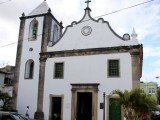
.
The façade has two bodies, the main one framed by cornerstones and a cornice, with a beautiful portal flanked by two doors on the ground floor and two windows at the level of the choir.
The tower has a pyramidal termination and corbels at the corners and a full arch.
The cornerstones, cornices and door surrounds, windows and arrowheads are made of ashlar. The interior has a crossing arch, niches and a pulpit basin also in sandstone.
The corner ceilings are round in the nave and domed in the chancel.
The neoclassical high altar is incomplete. The church’s images include those of Saint George, a crucifix, Our Lady of the Rosary and Saint Peter.
In the sacristy and in the side aisle, used as a Museum of Sacred Art, there are some pieces of furniture; worthy of note are the heads of saints, Saint Michael, Our Lady of the Snows (16th century), Saint Anthony, Saint Ignatius and Saint Caetano (17th century), and silver implements.
Typological data: This is a well-built church from the late 17th century.
Typical of this period are the corner surrounds and the pyramidal tower, first used in the Convent of Cairu (1660).
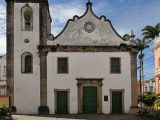
Similar enclosures are found at Sta Tereza, the Jesuit House of Prayer, Berquó and Sete Mortes manors in Salvador, and at the Church of São Brás in Santo Amaro.
Another archaic arrangement is in the two niches on the sides of the crossing arch, also seen in the College of Olinda and the churches of Ajuda and Belém in Cachoeira.
This element and the refinement of the construction suggest the intervention of a Jesuit architect.
Architectural history, according to IPAC (1988, p. 224): After the arrival of the first Portuguese and the foundation of the village of São Jorge, Francisco Romero fixed the settlement on the hill of São Sebastião.
In 1556 the Parish of São Jorge was created by Dom Pero Fernandes Sardinha and a first church was built by the first residents of the captaincy, but it was only completed in 1572.
The parish church of São Jorge was built after the convent of Cairu, which dates from 1660.
At the beginning of the 20th century, the church’s right sacristy was demolished to widen a road. Its original plan was therefore a T-shaped one, characteristic of the same century.
The Mother Church of St George can be considered the most important historical monument located in the seat of the municipality. The Museum of Sacred Art, located next to the church, has beautiful, old and rare pieces.
7. Outeiro de São Sebastião
From the viewpoint you can see the three islets that gave the town its name: the Ilhéus rock, the Rapa rock and the Tapitanga rock.
There you will find the Foundation Marker, placed when the 450th anniversary of the city’s foundation was celebrated, and the Nossa Senhora de Lourdes Chapel, a simple little church that gives the hill a bucolic feel.
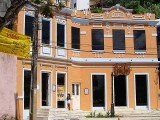
8. Bataclan
It was one of the places most frequented by the cocoa barons, perpetuated in the book Gabriela Cravo e Canela, by Jorge Amado.
It was a mix of cabaret, casino and ballroom. With the prohibition of gambling in Brazil, the establishment was closed and for many decades remained in ruins.
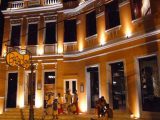
Now restored, it has a cybercafé, a restaurant, an exhibition room and an interesting environment called “Maria Machadão’s room”, a character from the novel.
9. Municipal Theatre
The Cine-Teatro Ilhéus was inaugurated on 22 December 1932, the result of a tax incentive granted by the then municipal intendant Eusinio Lavigne.
It was inaugurated as the largest concert hall in the city’s history, with the screening of the film Honrarás tua Mãe, by Fox Filmes.

.
Present were the Intendant, the owner Celso Martins and all the local society. The Diário da Tarde said: “Ilhéus is transformed into a kind of artistic village with an extraordinary number of theatre men and women who came here naturally attracted by the fame of prosperity of this land”.
Since its inauguration, the cine-theatre has played an active role in the leisure of the population of Ilhéus and in the construction of local culture. In that decade, the city had six cinemas.
At the time of its construction, the theatre had the capacity to accommodate about a thousand people and its cinematographic screen presented a great novelty: it allowed the sound of the tapes emitted by the differential horn, installed behind, to pass without being intercepted.
The ruined building was donated by the Rehem da Silva family to the City Hall and rebuilt by the then mayor, Jabes Ribeiro, and on 10 July 1986, the public packed the new venue to watch the performance of the Corpo ballet from Belo Horizonte.
The Municipal Theatre of Ilhéus was renovated with a modern structure in its internal part and with the original façade maintained, to preserve its history.
The current Municipal Theatre has an art gallery and foyer, as well as modern scenery, lighting, sound, acoustic and air conditioning equipment. The stage area is equipped with the latest in scenic assembly.
10. Jorge Amado House of Culture
Jorge Amado’s family lived on a farm near the present-day district of Ferradas, in the municipality of Itabuna, in 1912, when the man who would become the greatest writer of the cocoa region was born.
The farm was called Auricídia, which became the name of the wife of one of the author’s characters in the book Terras do Sem Fim.
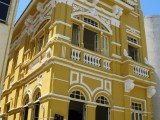
In 1914, when little Jorge was less than two years old, the Cachoeira River raged, causing one of the biggest floods in its history.
Many people lost their cocoa plantations, including Colonel João Amado de Farias, the writer’s father, who moved with his family to the neighbourhood of Pontal, in the bay of the same name, on the outskirts of the city of Ilhéus.
Impoverished, having lost everything, they set up a clog factory, and began to survive on the income from the small enterprise.
With his savings he bought a poor house in the same place, which had only one door and one window.
After some time, João Amado won the first prize in the Federal Lottery and had the beautiful 582 m2 palace built on the site of the modest shack, which today houses the Jorge Amado House of Culture.
Construction began in 1920, under the command of Maximiano Souza Coelho, and the building was inaugurated in 1926.
The house does not have its own style, being considered eclectic, with a mixture of neoclassical and colonial, in fact, a mixture of styles.
The floor is all original, the wood of the house is carved rosewood, a wood typical of the region, of low cost and high value.
It was often used in the houses behind the windows, because it was impracticable to use fabric curtains, since all the fabric available at that time in Ilhéus was foreign. The chandelier in the main room is made of glass, not real crystal, not the original, but it is from the time.
The flags on the doors are made of cast iron in the French neoclassical style. There are also the coloured glass flags in colonial style. The marble in the house came from Carrara in Italy.
It was widely found and used at the time, easily acquired because foreign ships passed through Ilhéus.
The floor is all original in jacaranda and vinhático, forming squares in two colours, a work widely used at the time.
The tiles that decorate the veranda are of the period, in English art-nouveau. They feature nautical and floral motifs: boats and orchids.
In 1988, the house was donated to the municipality by the state, was listed and inaugurated on 27 June 1997, with the presence of the writer himself and his family. In this house Jorge Amado wrote The Country of Carnival.
11. Paranaguá Palace
Building listed by the Institute for the Protection of the Artistic and Cultural Heritage of Bahia (IPAC).
On 20 January 1898, the foundation stone of the building was laid by Lt. Col. Domingos Adami de Sá, on the site of the former Jesuit house, the ruins of which have been entirely demolished.
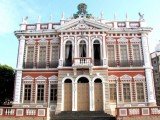
On 22 December 1907, the Palace was inaugurated by the same intendant, according to a commemorative plaque on the façade.
The decoration and painting work was done by the Italian artist Oreste Sarcelli, and the acetylene lighting by the Vita brothers.
The building has a constructed area of 1060 m2, is located in Praça J.J. Seabra and occupies the highest part of the square, in the historic and commercial centre of the city; it has four façades.
IPAC description (1988, p. 225): “Building of relevant architectural interest, built for Municipal headquarters. It has a rectangular plan, developed on two floors, around a large central vestibule, where the imperial staircase is located”.
The building has undergone several renovations over its almost 100 years of existence. Between 1912 and 1916, the building underwent a major renovation under the government of the intendant, Colonel Antonio Pessoa, including the installation of sanitary appliances and the expansion and repair of furniture.
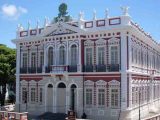
In 1919, despite the short time it had been built, it threatened to collapse, which is why the municipal offices were transferred to the School Group.
On 2 July 1923, the building was renovated and reopened to the public by the Intendant Cel. Eustáquio de Souza Bastos. The floors were replaced by concrete slabs and the original roof by three parallel roofs.
The Paço Municipal building was constructed between 1898 and 1907, at the height of the flourishing cocoa economy. It was one of the most luxurious, best decorated and furnished public buildings in the state at the time.
The upper floor housed the Council Chamber, the Intendant’s office, the Secretariat, the Engineering Section, a noble hall with mural paintings and courtrooms.
The ground floor housed the civil and criminal judges’ chambers, a medical centre, barracks and a jail, according to Borges de Barros (1981).
According to the same author, its architecture seems to have been inspired by the Paço dos Governadores in Salvador, before its last reconstruction in 1912, and of similar neoclassical inspiration.
The building’s name, Palácio Paranaguá, is a tribute to the president of the Province of Bahia who, on 28 June 1881, by Provincial Law No. 2187, elevated the town of São Jorge dos Ilhéus to the category of city, and it remains under the same name.
The marble statue in front of it, also neoclassical, represents Sappho, a poet of Greek antiquity, born on the island of Lesbos.
12. Chocolate Factory
Housed in a Swiss-style chalet and open to visitors, this is the first chocolate factory in Ilhéus. Here you can learn how the product is made and taste some of its varieties.
Ecological tours in Ilhéus
1. Ilhéus – Itacaré Park Road
The road is a true ecological walk of 65 km in length. Crossing the road there are footbridges and tunnels for crossing wild animals.
On the way, there are viewpoints with views of paradisiacal beaches and waterfalls. The beaches on the Serra Grande stretch are long, deserted and beautiful. Sargi Beach at Km 30, with fine sand and warm, transparent waters, has inns and restaurants.
At Praia Pé de Serra, a little further on, there is a belvedere with a beautiful view. Keep your camera handy. The road has a cycle path that leads to the entrance of Lagoa Encantada.
2. Lagoa Encantada
Located in an environmental preservation area in the middle of the Atlantic Forest, this lagoon is 14 km2 long and has floating islands about which the local people tell many “stories”; they say that the lagoon is enchanted and that supernatural beings live at the bottom of it.
The region, of great beauty, is especially rich in tree species.
There are many waterfalls, such as the Caldeiras da Almada, with lagoons great for bathing, and the Apepique very popular with rappellers.
3. Sloth Recovery Centre
A visit to this centre, created for the reintegration of the sloth animal into its habitat, is one of the most interesting things to do around Ilhéus.
Children will love seeing these docile animals clinging to trees or hanging from branches.
Cocoa farms in Ilhéus
1. Yrerê Farm
Very popular for walks on trails in the cocoa forest. Visitors can visit the big house, see the processing of cocoa and taste homemade sweets.
Those who visit the property in June can participate in forros.
2. Primavera Farm
The beautiful farm preserves documents dating from its foundation and objects once used in the house and in farming. Visitors will be able to see the plantation, learn about the daily activities of a cocoa farm and walk along trails.
The setting is well known by the noveleiros, as many scenes of the global Renascer were shot there. At the headquarters there is a restaurant and performances of regional shows.
3. Renascer Farm
It was also the setting for the soap opera Renascer. It has waterfalls and rapids where you can enter.
4. Rio do Braço
In this district where the wealth generated by cocoa gave rise to a noisy trade centre, the inhabitants of nearby regions would go to do their shopping.
Because of this prosperity, in 1905 the British built the Ilhiéus-Ubaitaba railway to transport goods and passengers.
After the collapse of the cocoa colonels who lost their plantations due to the spread of the “witches’ broom”, the town fell into decay.
There you can see the ruins of the houses from the early 20th century, the sets of the soap opera Renascer and what remains of the old railway. With the intention of revitalising the area, it was given the name Jorge Amado Theme Park, as it served as inspiration for many of the author’s books.
Villages around Ilhéus
1. Olivença
The Tororomba Spa is located in this hydro-mineral resort, which attracts fans of rejuvenation clinics, fitness centres and tanning sessions: the waters of Tororomba moisturise, tone and provide a natural tan! Roughly speaking, you are “tinted” by the minerals.
The spa has natural pools, an artificial waterfall, bar and restaurant. The Church of Nossa Senhora da Escada, dating from 1700, has a beautiful baroque image of the Virgin.
The popular festival of Puxada de Mastro de São Sebastião, on the second Sunday of the year, attracts visitors. But the biggest attraction is the beaches; Olivença is popular with surfers all year round.
Surfing championships take place from May to November.
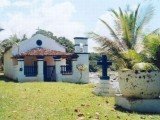
2. Rio do Engenho
It preserves two important historical relics dating from 1550: the Chapel of Our Lady of Santana, considered the third rural chapel built in Brazil, and the ruins of the Engenho de Santana, where the first slave revolts took place.
The town can be reached by boat along the same route travelled by the Portuguese explorers, who sailed through the mangroves.
The region is popular with canoeists and rafting enthusiasts.
The village celebrates its patron saint Nossa Senhora de Santana in the second half of July.
When visiting the village, be sure to try the pitu moqueca and the crab catado.
Beaches in Ilhéus
1. Norte Beach
Very long – about 50 km -, quite wild, with access by dirt road from Praia da Barra (which provides several panoramic views, up to BA-654).

Some of its stretches are known by names such as Pé de Serra – or Serra Grande – and Ponta do Ramo. The Almada River runs parallel to the beach for many kilometres.
The sea is green, the sand is fine, there are coconut trees (including an exotic and unique coconut tree with branches, at Ponta do Ramo) and Atlantic forest. It is popular for surfing and fishing (for carapeba, mullet, sea bass and hake). It has a hotel.
2. Barra Beach
It has fine golden sand, coconut trees, stalls and a fishing village.
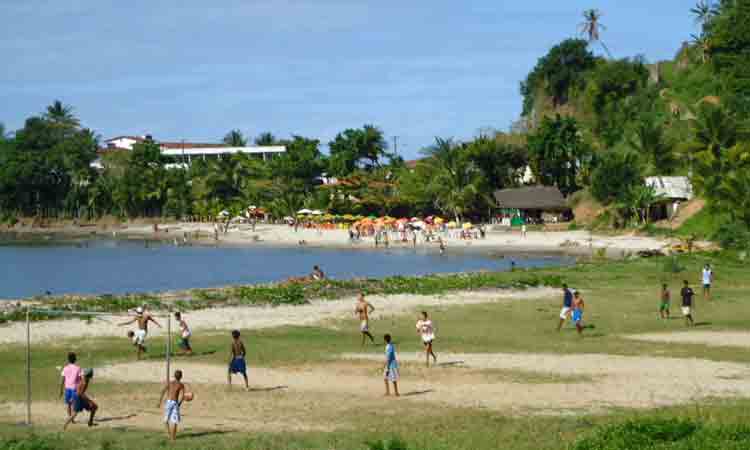
It lies at the mouth of the Almada River. A stretch of it is known as Praia de São Miguel. It has a guesthouse.
3. Marciano Beach
Urban, with reefs and rocks at the ends. It has a hotel, stalls and is popular for surfing.
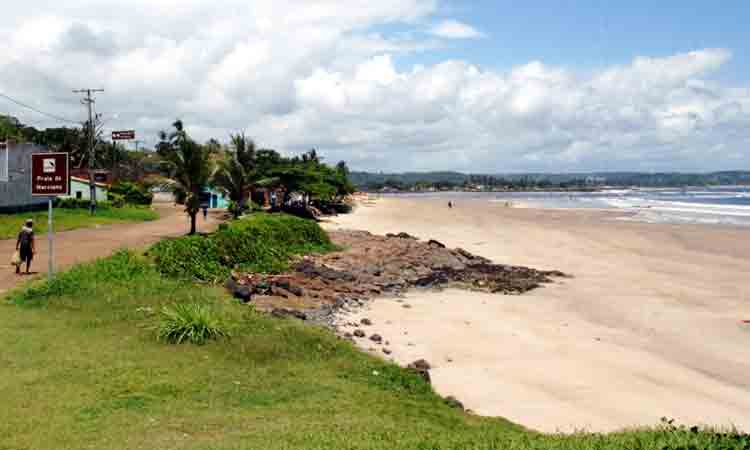
4. Malhado Beach
It is in front of the Petrobrás terminal. The sea covers almost the entire strip of sand.
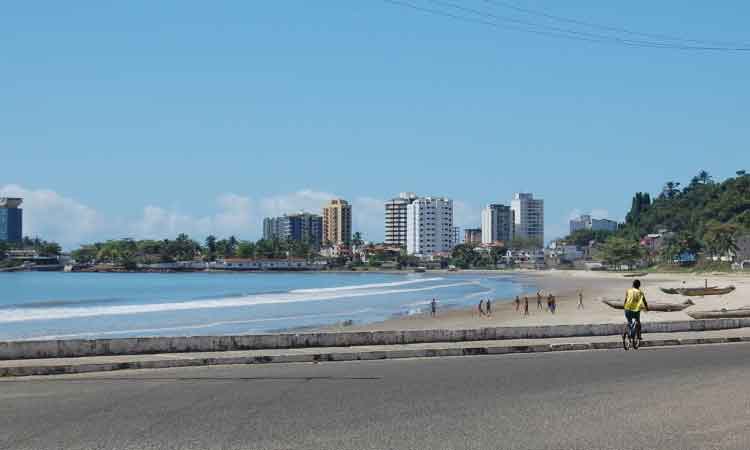
It is not recommended for bathing and is often dirty.
5. Avenida Beach
Starts at the pier and runs down to the old harbour. It is straight, with loose golden sand and several bars and stalls.
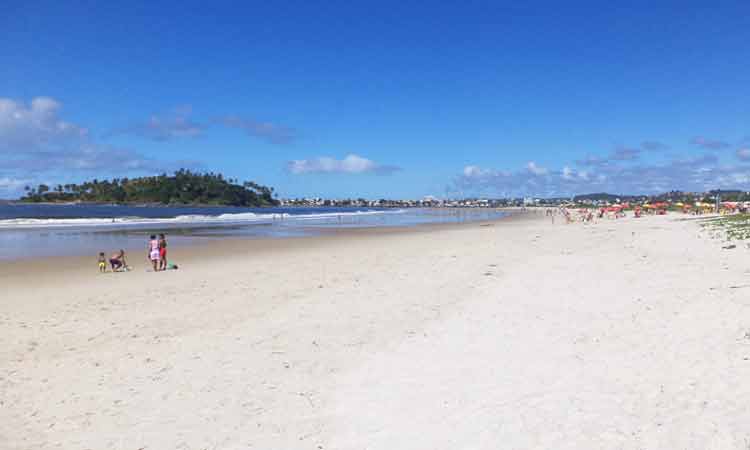
An urban development project is being developed along the beach, including sports courts, a cycle path and an acoustic shell.
The stretch to the right of St Sebastian’s Cathedral is unsuitable for bathing.
6. Cristo Beach
It is located at the point that divides the sea from Pontal Bay (where the Cachoeira and Santana rivers flow).

The sand is fine and golden. Very popular for water sports (sailing boats, kayak, jet sky, hobby-cat).
7. Concha Beach
Quiet, small – about 100 m – and has a good view of Pontal Bay and Avenida Beach.
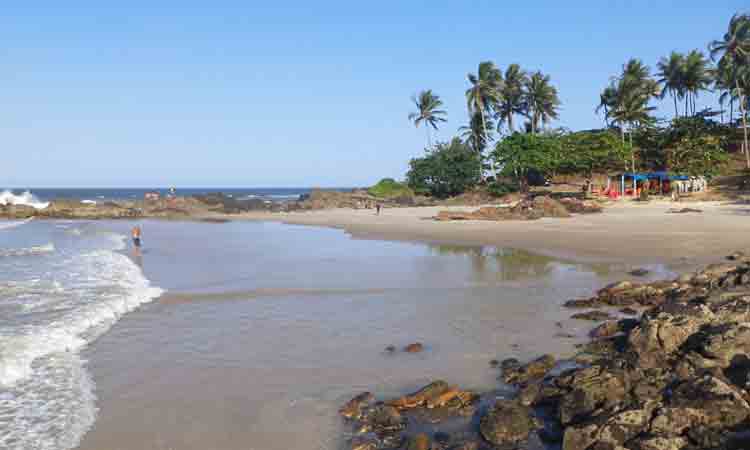
It is surrounded by coconut trees and native vegetation. It is located at the foot of Morro do Pernambuco.
8. Praia do Sul
Fishing and surfing tournaments are held here from time to time.
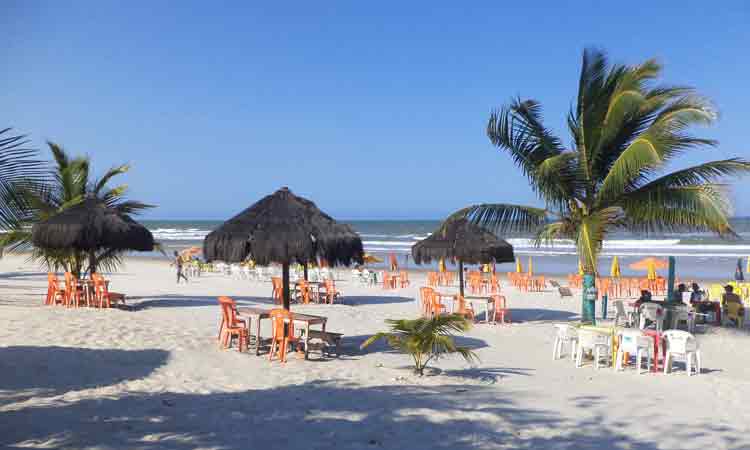
Straight, with reefs, strong waves and thick, yellowish sand. It has coconut trees, holiday homes, hotels and snack stalls.
9. Millionaires Beach
The name is due to the sumptuous mansions that surround it. It is the most popular.

Bordered by coconut trees, it has relatively calm waters and fine golden sand. It has many stalls, bars and simple restaurants with showers and toilets.
10. Cururupe Beach
Straight, with strong waves, soft, clear and thick sand. It has coconut trees and grass. There are holiday homes and snack stalls standardised by the City Hall.
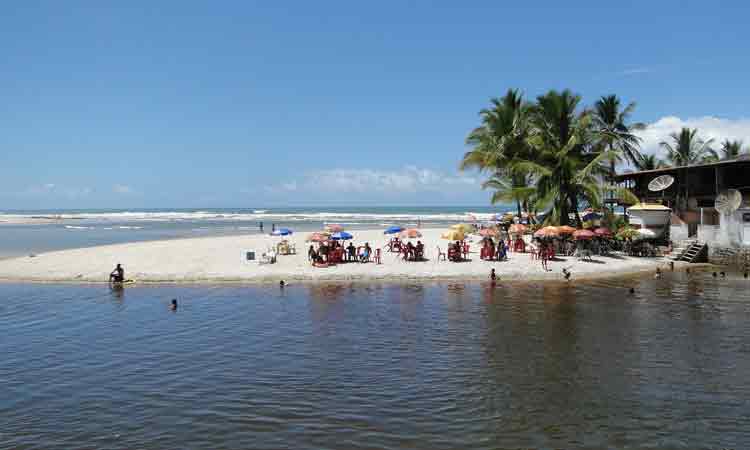
The place is a historical site: there in 1559, a village of Tupiniquin Indians was practically exterminated by the Portuguese.
At the end of the fierce battle (called the Battle of the Swimmers), the bodies of the Indians occupied about 2 km of the beach. It has a hostel and camping.
11. Back Door Beach
The first in the district of Olivença.

It is a favourite for surfing (practically only frequented by surfers, as it is dangerous for bathing).
12. Batuba Beach
Like Back Door, it has waves of up to 2.5 metres and is also popular for surfing.
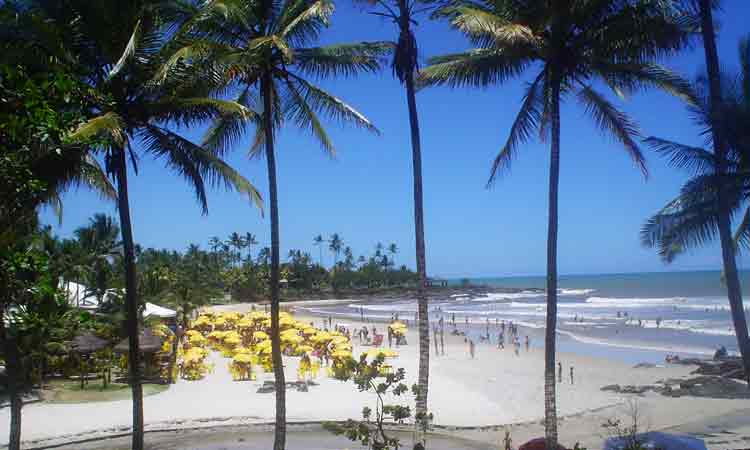
But it is equally dangerous for bathing, as it has currents, reefs and many stones in the sand. Even so, it is very popular.
It has coconut trees, golden and beaten sand, holiday homes and snack stalls with tables and chairs scattered on the sand. It has a hotel and camping.
Bahia.ws is the largest tourism and travel guide for Bahia and Salvador
Tourism and Travel Guide of Ilhéus in Bahia



















